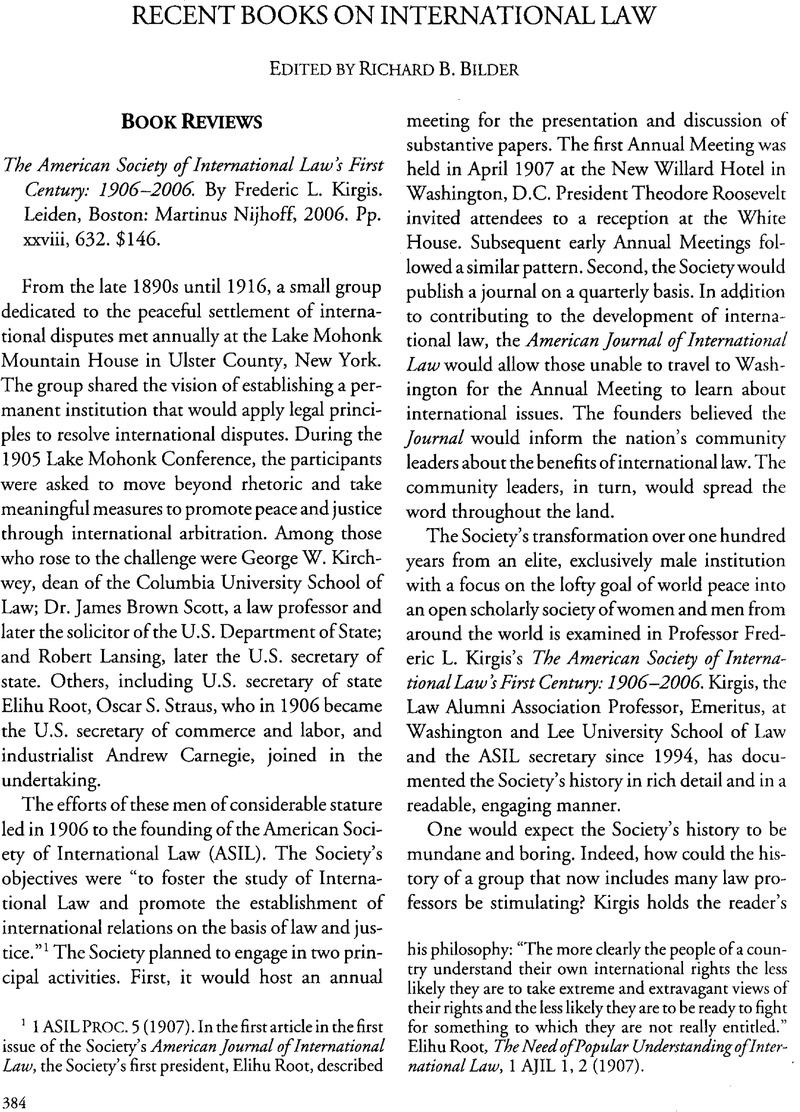No CrossRef data available.
Published online by Cambridge University Press: 27 February 2017

1 1 ASIL Proc. 5 (1907)Google Scholar. In the first article in the first issue of the Society’s American Journal of International Law, the Society’s first president, Elihu Root, described his philosophy: “The more clearly the people of a country understand their own international rights the less likely they are to take extreme and extravagant views of their rights and the less likely they are to be ready to fight for something to which they are not really entitled.” Elihu, Root, The Need of Popular Understanding of International Law , 1 AJIL 1, 2 (1907)Google Scholar.
2 Quoting Joseph, H. Choate, The Two Hague Conferences 33 (1913)Google Scholar.
3 See, e.g., Lori Fisler, Damrosch, The “American”and the “International” in the American Journal of International Law, 100 AJIL 2, 7 (2006)Google Scholar (the current co–editor in chief notes the focus of the Journal on U.S. foreign relations law, explaining that “[i]t is part of our mission as an American journal to hold up U.S. practices to informed debate in the discourse of international law”).
4 Rosalyn, Higgins, Keynote Address: “A Just World Under Law,” 100 ASIL Proc. 387, 395 (2006)Google Scholar.
5 George, A. Finch, The American Society of International Law, 1906–1956 , 50 AJIL 293, 311 (1956)Google Scholar.
6 James Wilford, Garner, The Nazi Proscription of German Professors of International Law , 33 AJIL 112, 114 (1939)Google Scholar.
7 Quoting ASIL Executive Council, Precis of the First Meeting at 3 (Jan. 29, 1906).
8 Kirgis draws on the work of Alona Evans and Carol Per Lee Plumb in examining the early history of women in the Society. See Alona, E. Evans & Carol Per Lee, Plumb, Women and the American Society of International Law , 68 AJIL 290 (1974)Google Scholar. It is not clear why women were banned. Evans and Plumb dispel the notion that the term “men” was used generically, as Philip Jessup would later claim. They note: “it is difficult to avoid the conclusion that there was, if not a prejudice against, then a cognizable social bar to women at that time in an organization such as the Society.” Id. at 291.